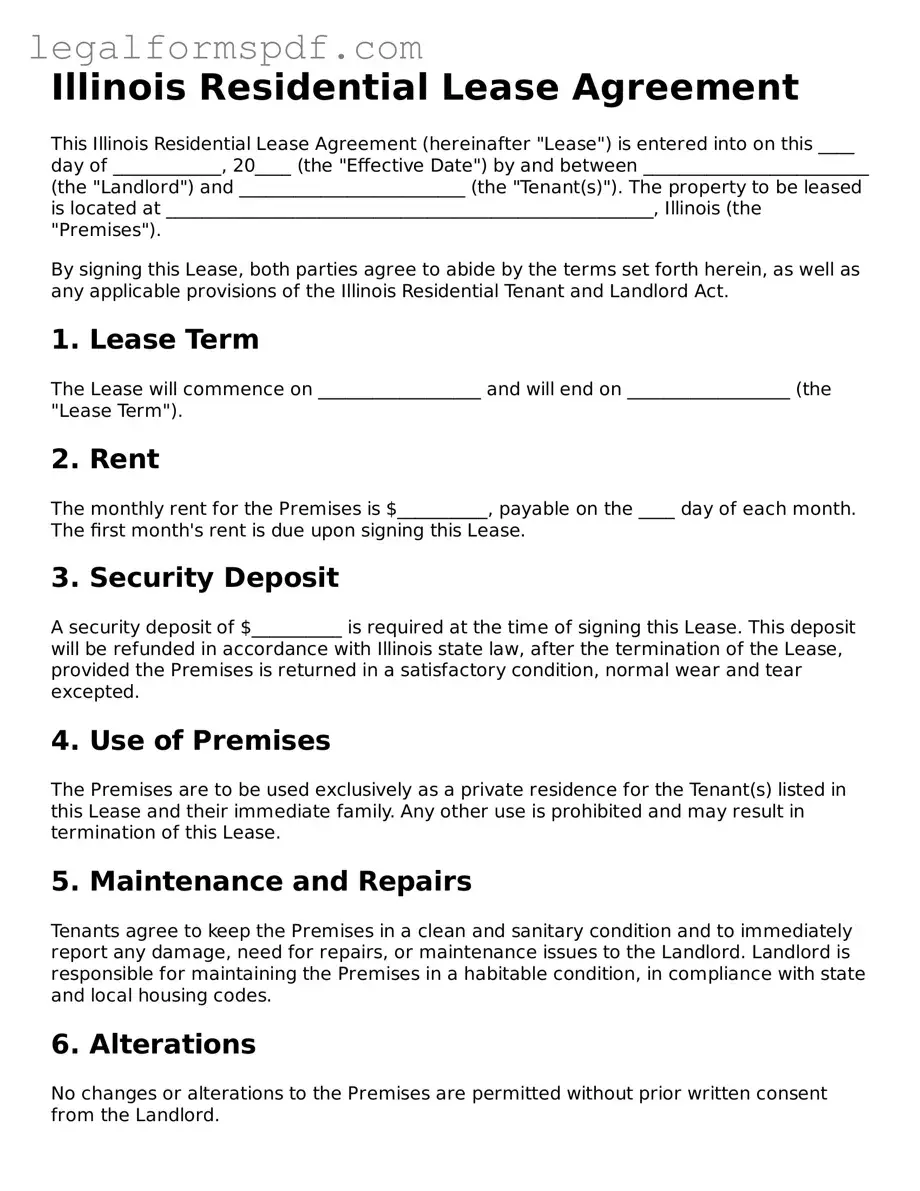Illinois Residential Lease Agreement
This Illinois Residential Lease Agreement (hereinafter "Lease") is entered into on this ____ day of ____________, 20____ (the "Effective Date") by and between _________________________ (the "Landlord") and _________________________ (the "Tenant(s)"). The property to be leased is located at ______________________________________________________, Illinois (the "Premises").
By signing this Lease, both parties agree to abide by the terms set forth herein, as well as any applicable provisions of the Illinois Residential Tenant and Landlord Act.
1. Lease Term
The Lease will commence on __________________ and will end on __________________ (the "Lease Term").
2. Rent
The monthly rent for the Premises is $__________, payable on the ____ day of each month. The first month's rent is due upon signing this Lease.
3. Security Deposit
A security deposit of $__________ is required at the time of signing this Lease. This deposit will be refunded in accordance with Illinois state law, after the termination of the Lease, provided the Premises is returned in a satisfactory condition, normal wear and tear excepted.
4. Use of Premises
The Premises are to be used exclusively as a private residence for the Tenant(s) listed in this Lease and their immediate family. Any other use is prohibited and may result in termination of this Lease.
5. Maintenance and Repairs
Tenants agree to keep the Premises in a clean and sanitary condition and to immediately report any damage, need for repairs, or maintenance issues to the Landlord. Landlord is responsible for maintaining the Premises in a habitable condition, in compliance with state and local housing codes.
6. Alterations
No changes or alterations to the Premises are permitted without prior written consent from the Landlord.
7. Governing Law
This Lease shall be governed by and construed in accordance with the laws of the State of Illinois.
8. Entire Agreement
This document and any attached addenda constitute the entire agreement between the parties concerning the subject matter hereof and supersedes all prior agreements, understandings, negotiations, and discussions, whether oral or written.
Signatures
IN WITNESS WHEREOF, the parties have executed this Lease as of the date first above written.
___________________________
Landlord's Signature
___________________________
Tenant's Signature
___________________________
Date
